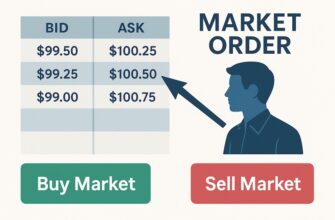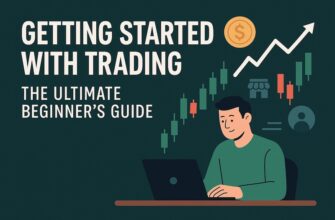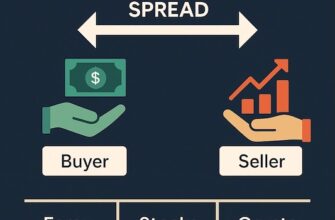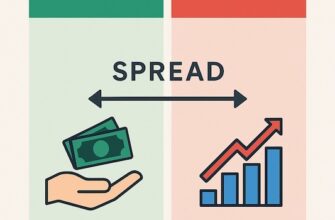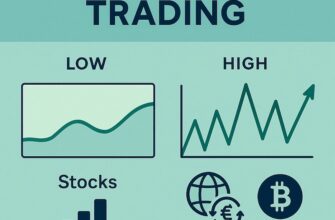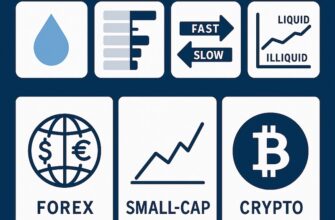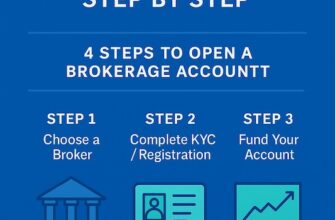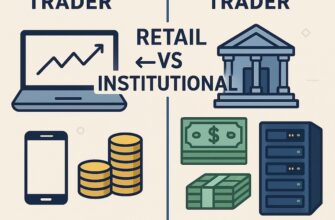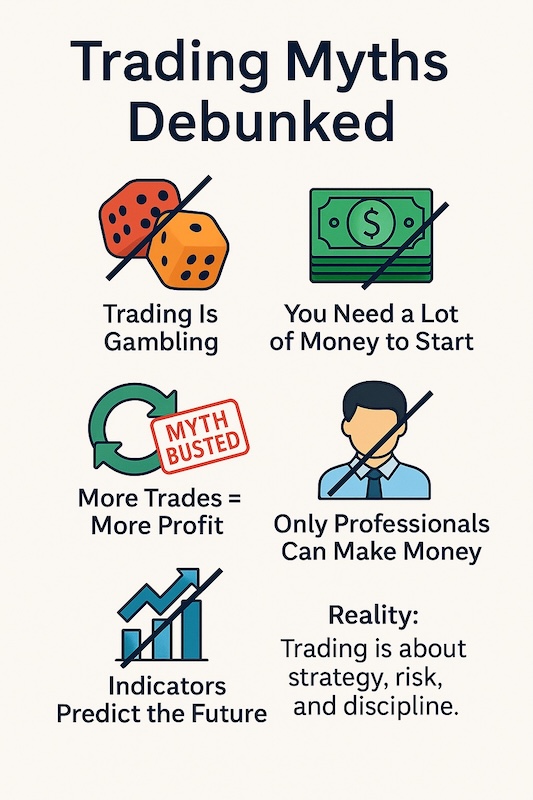
Trading has always attracted myths and misconceptions. From social media gurus promising instant riches to skeptics dismissing it as gambling, beginners often hear conflicting messages. These common trading myths can be dangerous because they distort expectations and prevent new traders from building realistic strategies.
In this article, we’ll break down five of the most widespread trading misconceptions, explain why they’re wrong, and show what the reality of trading really looks like.
- Myth 1 – Trading Is Gambling
- Myth 2 – You Need a Lot of Money to Start
- Myth 3 – More Trades = More Profit
- Myth 4 – Indicators Predict the Future
- Myth 5 – Only Professionals Can Make Money
- Key Takeaways
- FAQ
- Can you really make money from trading?
- Why do most traders fail?
- Is trading gambling?
- Do you need a lot of money to start trading?
- Are professional traders always more successful?
Myth 1 – Trading Is Gambling
One of the oldest beliefs is that trading is gambling. At first glance, it might seem true: in both cases, you put money at risk with uncertain outcomes. But the comparison ends there.
- Gambling is based on fixed odds designed to favor the house. Over time, the more you play, the more likely you are to lose.
- Trading is based on markets, which reflect real economic activity, company performance, and supply and demand. With the right risk management and discipline, traders can stack probabilities in their favor.
Example: If you flip a coin in a casino, the odds never change. In trading, you can tilt the odds by analyzing trends, managing risk, and following rules. Professionals don’t rely on luck but on strategy and statistical edge.
Bottom line: Trading without a plan is gambling. Trading with rules, risk management, and education is a skill-based endeavor.
Myth 2 – You Need a Lot of Money to Start
Many beginners believe they need tens of thousands of dollars to trade. That used to be true decades ago when brokers charged high commissions and had minimum deposit requirements. Today, the reality is different.
- Low entry barriers: Many brokers allow you to open accounts with as little as $100 or less.
- Fractional shares: You don’t need $3,000 to buy Amazon; you can purchase a fraction for $30.
- Leverage in forex and CFDs: Small accounts can control larger positions (though with higher risk).
Example: A college student might start investing $50 a month into ETFs, while a forex trader could open a micro account to practice with minimal capital.
Key point: You don’t need a fortune to begin. What you do need is education, discipline, and realistic expectations.
Myth 3 – More Trades = More Profit
Another common misconception is that trading more frequently means making more money. In reality, overtrading is one of the fastest ways to lose capital.
- Transaction costs: Even in “commission-free” accounts, you pay spreads. More trades = more costs.
- Emotional fatigue: Overtrading often comes from chasing every small move, which leads to mistakes.
- Quality vs quantity: A handful of well-planned trades usually outperform dozens of impulsive ones.
Example: A swing trader who carefully selects 5–10 trades a month might outperform a day trader who takes 200 poorly planned trades.
Lesson: Patience and discipline often lead to better results than constant activity.
Myth 4 – Indicators Predict the Future
Beginners often fall into the trap of believing that technical indicators like RSI, MACD, or moving averages can “predict” market moves. This is one of the most persistent trading myths.
- Reality: Indicators don’t predict; they describe what has already happened. They’re tools for interpreting trends, momentum, or volatility.
- Example: An RSI above 70 doesn’t guarantee a reversal; it simply shows that an asset is currently “overbought” relative to recent history.
- Professional use: Experienced traders combine indicators with price action, risk management, and context — they don’t rely on them blindly.
Analogy: Indicators are like a car’s dashboard. They tell you how fast you’re going and how much fuel is left, but they don’t predict traffic jams ahead.
Myth 5 – Only Professionals Can Make Money
It’s easy to think trading is reserved for Wall Street insiders with advanced degrees and expensive terminals. While institutions do have advantages, retail traders also have unique strengths.
- Technology: Retail traders now have access to advanced charting, news feeds, and execution platforms once reserved for pros.
- Flexibility: Institutions manage billions and face restrictions; individuals can be nimble, take smaller positions, or exit quickly.
- Education: Free resources, courses, and communities give individuals a strong starting point.
Example: During the GameStop short squeeze in 2021, retail traders collectively influenced market prices in a way institutions couldn’t ignore.
Reality check: Not everyone will succeed, and most beginners do fail. But with realistic expectations, risk control, and practice, individuals can and do make money in markets.
Key Takeaways
- Trading myths can distort expectations and cause costly mistakes.
- Trading is not gambling when approached with strategy and risk management.
- You don’t need huge capital to start; education and discipline matter more.
- More trades don’t guarantee more profit; quality over quantity wins.
- Indicators are tools, not crystal balls.
- Retail traders can succeed, even if institutions have advantages.
FAQ
Can you really make money from trading?
Yes, but it requires discipline, education, and risk management. Success is possible, but not guaranteed.
Why do most traders fail?
Because they lack a plan, underestimate risk, or let emotions dictate decisions. Overtrading and poor money management are common reasons.
Is trading gambling?
Not if you approach it professionally. With a strategy, risk controls, and consistent discipline, trading is very different from gambling.
Do you need a lot of money to start trading?
No. Modern brokers allow small deposits and fractional shares, though more capital can help with diversification.
Are professional traders always more successful?
Not always. Institutions have resources, but individuals have flexibility. Success depends on preparation and execution, not just professional status.

